Methane emissions are individually the largest source of greenhouse gases in beef and dairy, also they are a major contributor to anthropogenic methane (CH4) emissions across the globe. In 2019, the Advanced Research Projects Agency Energy (ARPAE), the Foundation for Food and Agriculture Research (FFAR), and World Wildlife Fund (WWF) gathered numerous stakeholders advocating for research and the production of seaweed, dairy cattle, animal feed, beef, and dairy products to discuss problems and solutions in association with the application of seaweed based ingredients to lower enteric methane (CH4) emissions.
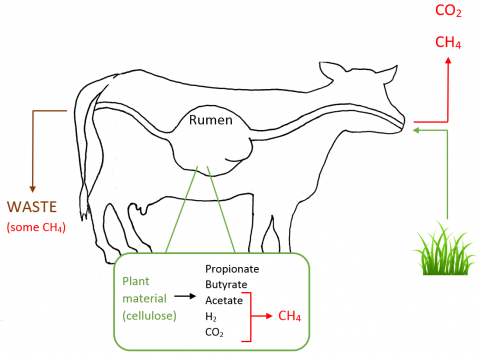
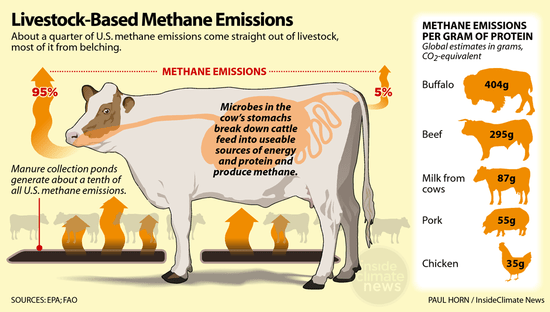
Several approaches for the mitigation of enteric methane (CH4) emissions have been researched and proposed over several recent decades of which mainly focus on genetics, animal nutrition, and management. Globally, the improvement of animal efficiency is presumably the most effective methane (CH4) mitigation method. Additives in feed, such as inhibitor 3-nitrooxypropanol (3-NOP), are known to have consistently decrease enteric methane emissions by about 30% in both beef and dairy cattle. However, their application in ruminant diets is not widespread at the current moment due to the requirement of regulatory approval, the absence of congressional mandates for agricultural greenhouse gas (GHG) reduction in the majority of regions, and the lack of incentives in regards to carbon credits or the gain increases in animal productivity.
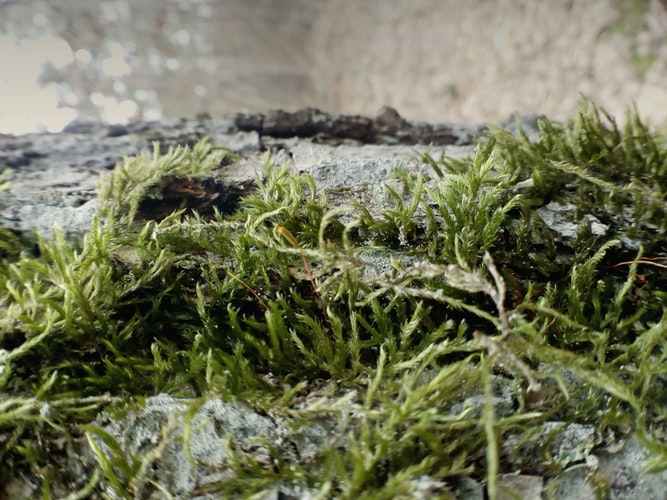
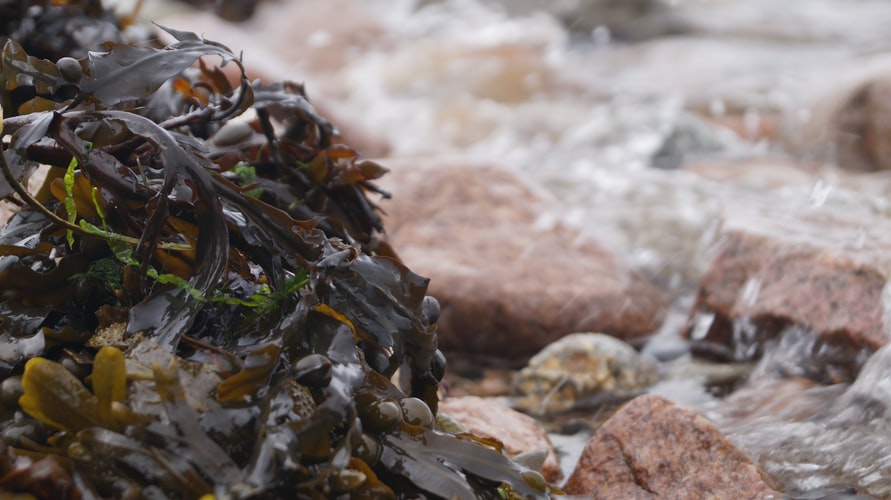

For millenia livestock have been grazing on seaweeds found on the coasts of beaches. Nonetheless, seaweeds have been foraged on by coastal civilizations for feed around the globe. This fact is evident by the intentional feeding practices in Greece dating back to at least 100 BC. Today, the majority of additives for algae based livestock feed ensiled or milled brown seaweeds such as rockweed (cf. A. nosodum) and kelp (cf. Laminariales). Seaweeds provide a variety of essential nutrients, also they provide numerous secondary plant compounds. Certain types of seaweeds contain omega-3, omega-6, and other polyunsaturated fatty acids (PUFAs). All of which could aid in ruminant reproduction through improved birth rates and reduced miscarriages. While the driving factors by which polyunsaturated fatty acids (PUFAs) aid in reproductive success aren’t confirmed, a fatty acid compositional analysis states that it can be related to the incorporation of polyunsaturated fatty acids (PUFAs) in the tissues of reproductive organs. Feeding brown seaweed extracts may be beneficial for the health by reducing oxidative stress, stress indicators, and incidents of ketosis. Supplementing kelp in feed may also improve livestock performance, as trials in cows undergoing lactation have demonstrated substantial reductions in ruminal ammonia nitrogen and increased propionate, acetate, and total volatile fatty acids, which these findings can improve milk yield. Additionally, seaweeds like Asparagopsis sp. that mitigate methane (CH4) appear to turn hydrogen (H2) metabolism into propionate production, which enables greater energy utilization from feed varieties consumed by ruminants. Algae based feeds can also improve fatty acid profile, diminish somatic cell counts within milk and increase fat content. However, seaweeds can also contain inorganic compounds and heavy metals like bromine, arsenic, iodine, and other bioactive halogenated organic elements that at high levels may be toxic in humans and animals. Continual excess iodine consumption of kelp meal in dairy cows can produce iodine enriched milk. Interestingly, this could provide an opportunity to fix iodine defiency in humans which is estimated to impact 2 billion humans globally. However, it is also concerning to consider that the need to refrain from excess iodine intake in humans, especially in populated areas where iodine consumption in humans are at sufficient levels. There is also safety concerns in respect to trihalomethanes such as bromoform, which is the primary compound in the methane inhibiting Asparagopis species. The United States’ Environmental Protection Agency (EPA) has created a .08 mg/L limitation for trihalomethanes in drinking water, therefore any levels above this limitation in milk from cows consuming seaweed could present a safety concern in regards to human food.

However, ocean seaweed farming can be beneficial to the environment in numerous ways. In oceans, seaweed can provide an enriched ecosystem for fishes, sequesters carbon, gets rid of excess nutrients and shields calcifiers from acidification. Seaweed on shorelines provides protection from the forces of waves and supplies feed for numerous native species. The cultivation of seaweeds can be done through the recirculation of land based aquatic culture systems and are frequently used for biofiltration in multi-trophic systems of recirculation to maintain water quality.
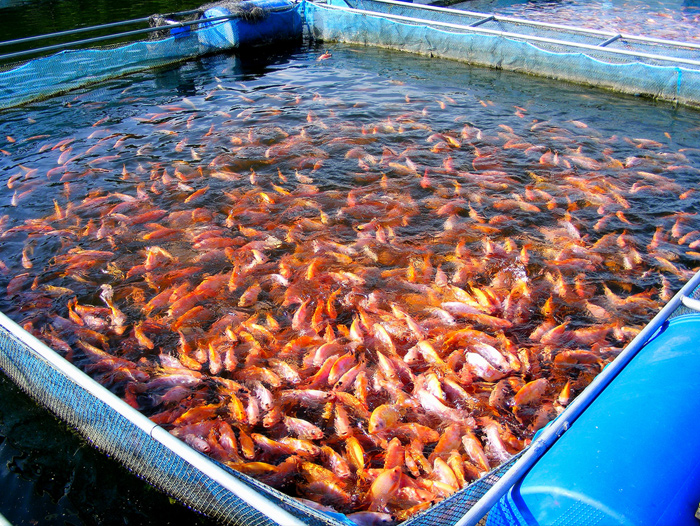
Regulatory challenges also provide information to the feeding of seaweed to livestock. Presently, the U.S. Food and Drug Administration (FDA) limits the utilization of dietary seaweed in livestock by select seaweed species and also the uses and inclusion rates. To know exactly these specifications research AAFCO 57.73, 60.19, 60.76, and Title 21 Code of Federal Regulations 582.30 and 582.40. Accomplishing expansion for the use of dietary seaweed in livestock in the U.S. requires more extensive research necessary for current approvals, along with newer seaweed sources to illustrate the safety and efficacy according to Food and Drug Administration (FDA) regulations.
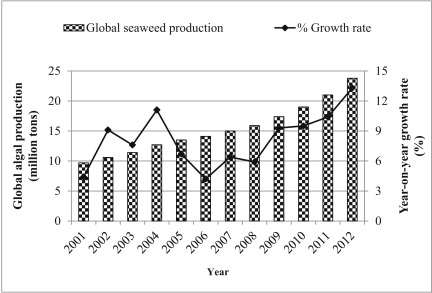
A really significant research need is to develop appropriate strategies for screening various species that can mitigate enteric methane (CH4) emissions, before investing significant money and time in cultivation and or animal trials. Therefore, researchers that have an interest in studying seaweed for the purpose of mitigating enteric methane (CH4) emissions are encouraged to create agreed upon for evaluating seaweed which is referred to as “in vitro”. These strategies should allow for “in vivo” dosing recommendations relative to the active ingredients found in seaweed, which may vary substantially between species. However, at the present moment it is difficult for scientists to garner sufficient biomass from different seaweed species to perform “in vivo” trials with sufficient animal quantities, replicates, and examination time frame. Partnering teams of aquaculturists, crop breeders, and seaweed biologists will need to visualize an economic and scalable approach to seaweed cultivation and pollunation, coupled with an “in vitro” and an “in vivo” analysis, to inform farming techniques and species selection necessary for research and development.
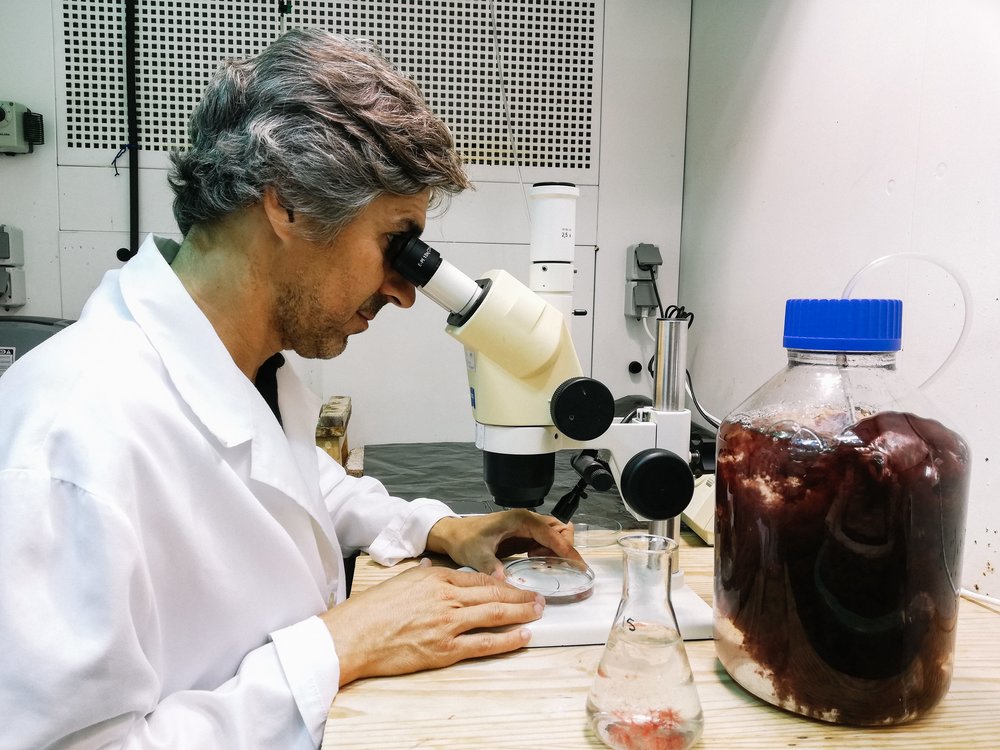
Large scale livestock feeding operations along with feed manufacturers need consistent quality, volume and safely secure raw materials. Additionally, new feed additives must not displace critical carbohydrates, protein, minerals, and other essential nutrients. Therefore, it is probable that seaweed would need to be utilized as feed supplementation, which is generally defined as less than 1% of the dry matter intake (DMI) for an animal’s diet. However, supplying the cattle industry with sufficient seaweed can be an issue. Across the globe, seaweed farming creates more than 30 million metric tons (MMT, wet weight) of raw material which by assuming 80-90% water content, translating to 3-6 million metric tons (MMT) when dried. Based on traditional dry matter intake regarding beef and dairy livestock, it is calculated that the potential volume of seaweed necessary to supply 93 million U.S. cattle is recommended to be at a 1% inclusion level.
The calculated 3-3.4 million metric tons (MMT) of dried seaweed necessary per year would represent the global production of over half of all seaweed. Supplying global livestock of roughly 1.4 billion cattle could not be implemented at the present moment, however it is presumed that large scale utilization of methane (CH4) mitigants in subsistence production systems is currently not feasible due to the cost and other limitations as well.
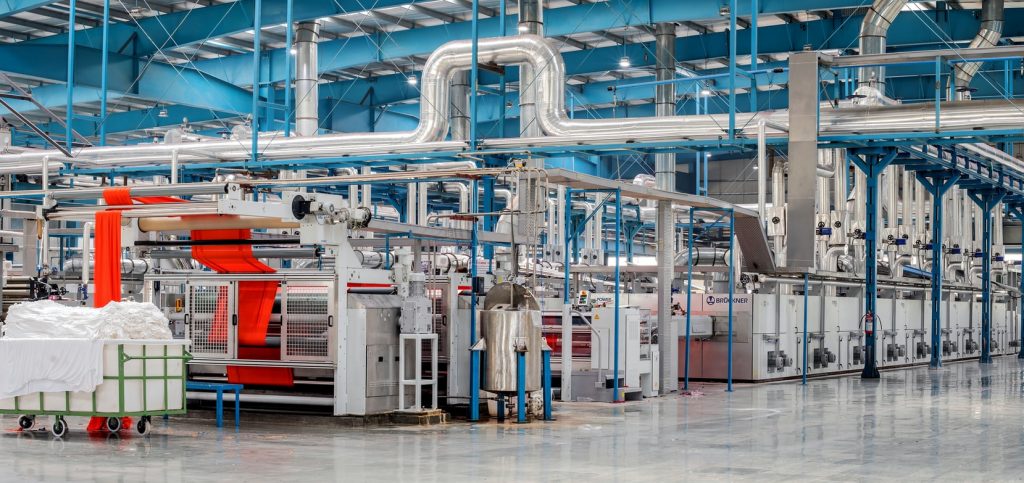
One of the most significant issues feed manufactures face while developing seaweed utilization in feed is compliance in regards to industry regulations. Feed ingredients for animals are highly regulated throughout many countries, along with approval processes which is similar to human food consumption. In the U.S. feed requirements need to typically meet human and animal safety standards, with in depth documentation of supporting evidence via data and methods used to acquire it, along with details of the manufacturing process, evidence of consistent manufacturing, level of toxicity for any potentially harmful substances in regards to the specified ingredient, and a proposed legal explanation for the specified ingredient. Additionally, feed manufacturers need to find ways to make seaweed based feed ingredients which can be easily integrated with the manufacturing and handling systems currently utilized by the feed industry. For instance, seaweed products pertaining to the animal feed industry requires the products to be in a dried form for inclusion into the mixture of various feed ingredients, have concentration levels of active compounds necessary for low inclusion rates, possess sustained productivity over time to meet realistic shelf life requirements of isolated ingredients and in mixed feeds, possess the ability to withstand transportation and processing like pelleting or extrusion, is palatable for animals, maintains a consistent nutrient profile, and is cost effective for manufacturers along with their customers. Lastly, since it is likely that quality and effectiveness may undergo modification during production, storage, processing, safety, efficacy, and stability of the final product must all be evaluated before commercial application.

Differentiation among “in vivo” research trials has been challenging to construct a comprehensive database describing the consequences of feeding seaweed to livestock. Future “in vivo” research needs to illustrate that seaweed consumption has no detrimental health consequences in animals and that seaweed based foods for human consumption are safe, as well as assurance that seaweed products are effective when consumed long term. Studies also need to compare seaweed products with other methane (CH4) mitigants available on the market at the present moment, including numerous plant based and microbial based oil products that state off-label methane (CH4) reduction statements that have not been substantiated by global regulatory entities. This will be essential as more methane (CH4) inhibitors are made commercially available along with methane (CH4) emissions becoming subject to regulatory stipulation at the farm level.
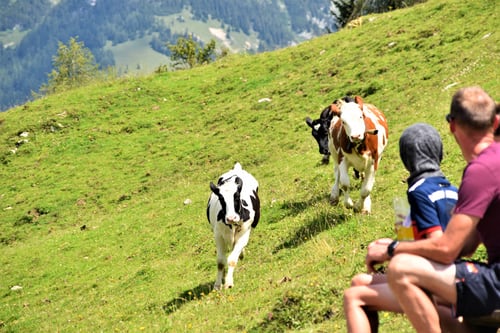
Seaweed contains bioactive compounds that are responsible for enteric methane (CH4) emission reduction which is done through modulating microbial populations. Studies in humans has displayed that seaweed can serve as a prebiotic which positively affects the function and composition of the gastrointestinal microbial populations, commonly known as the gut microbiome. Since knowledge of the microbiome and the contribution it presents to animal health is relatively new, metagenomic research is essential to understanding how various seaweeds influence the rumen microbiome and if these effects can be manipulated to positively impact animal productivity and health, along with the environment as well.
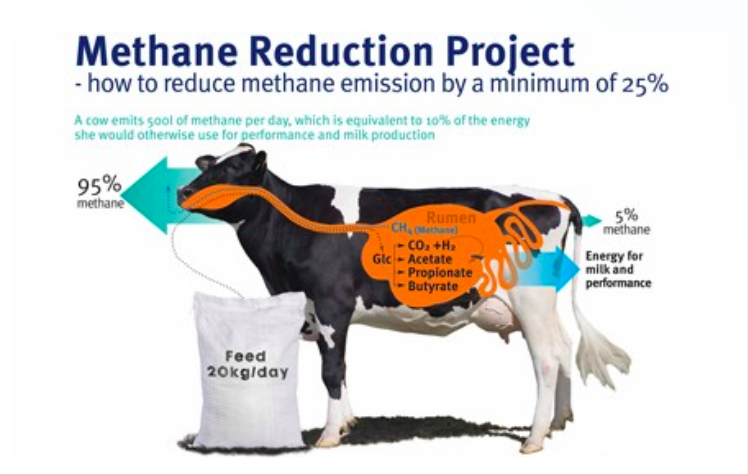
Initial results of “in vitro” research trials show that feeding small doses of seaweed to livestock can reduce the production of enteric methane (CH4) emissions. Several “in vitro” research studies are currently being implemented to pinpoint the potential methane (CH4) reduction of a vast variety of seaweeds, initiating a phase for further investigation of thorough candidates. Investors from the feed, seaweed, animal, along with food and beverage industries, in addition to funding and research organizations, have all pinpointed several serious questions required to be answered to thoroughly examine seaweed based feed additives as a long term, replicable solution to enteric methane (CH4) emissions. It is recommended that researches, overseers in supply chains, and specialists in consumer psychology to work together to develop research strategies that produce consistent, sustainable and comparable findings, to share resources and knowledge, and to launch an accelerated voyage to find solutions to the serious questions presented here.
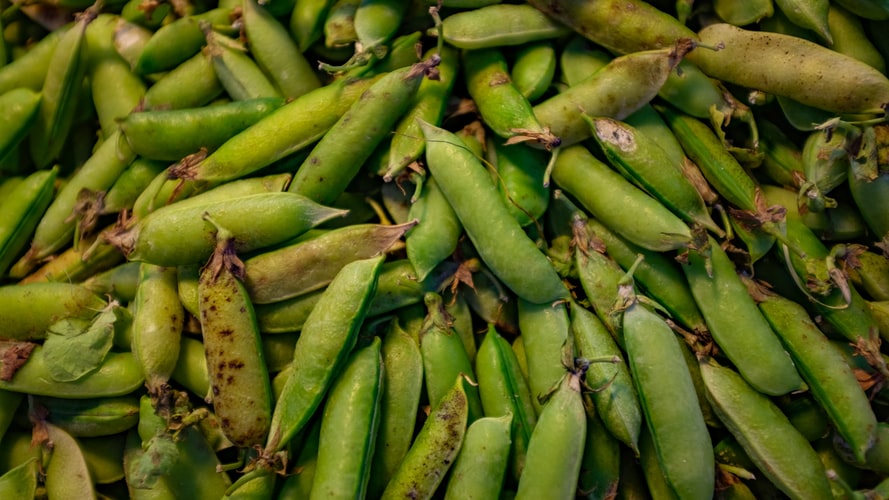
Even with the effect being smaller, it should not be discarded because these legumes can be planted into livestock systems currently, so that this process is available to livestock in the near future. This could feed millions of livestock across the globe. A 20% reduction in methane (CH4) emissions from these plant species could equate to approximately half a million to a million tons of greenhouse gases (GHG) yearly. This equates to taking roughly 200,000 cars off roadways each year.
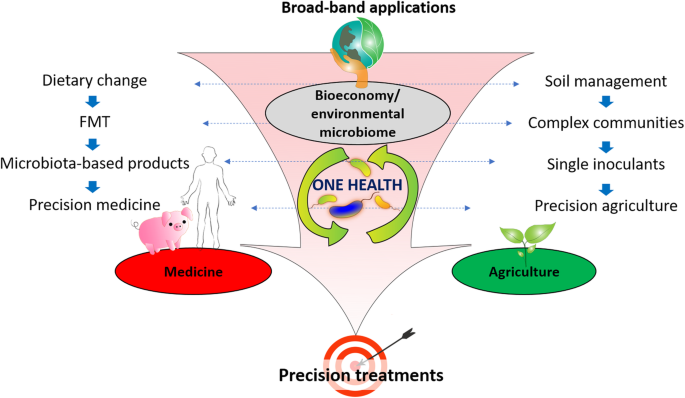
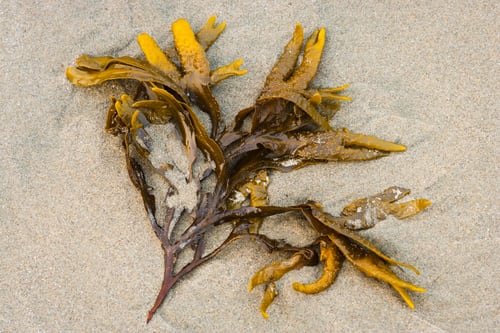
Enteric fermentation is a highly evolved process which allows ruminants the digestion of cellulose. Cellulose is the basic component of a plant’s cellular wall. Rumen microbes allow for the fermentation of simple and complex carbohydrates like cellulose to turn into volatile fatty acids (VFAs), that can satisfy over 70% of the requirements for energy production of the host animal. However, producing certain volatile fatty acids (VFAs) also produces hydrogen (H2) which converts to methane (CH4) via methanogenic archea or in other words methanogens. Although methane (CH4) is shortly lived in comparison to other green house gases (GHG), which persists in the atmosphere for approximately 10 years, it has a substantial impact on the climate because of its global warming potential (GWP). Methane (CH4) is roughly 28 times higher than that of carbon dioxide (CO2). Enteric methane (CH4) is not to be in confusion with methane (CH4) emissions from manure which is primarily released from eructation directly from the animal and is the primary direct contributor to greenhouse gases (GHG) emissions from beef and dairy production. In the United States, approximately 26.7% of total methane (CH4) emissions are the result of enteric fermentation, which correlates to roughly 2.7% of anthrogenic greenhouse gases (GHG) emissions.
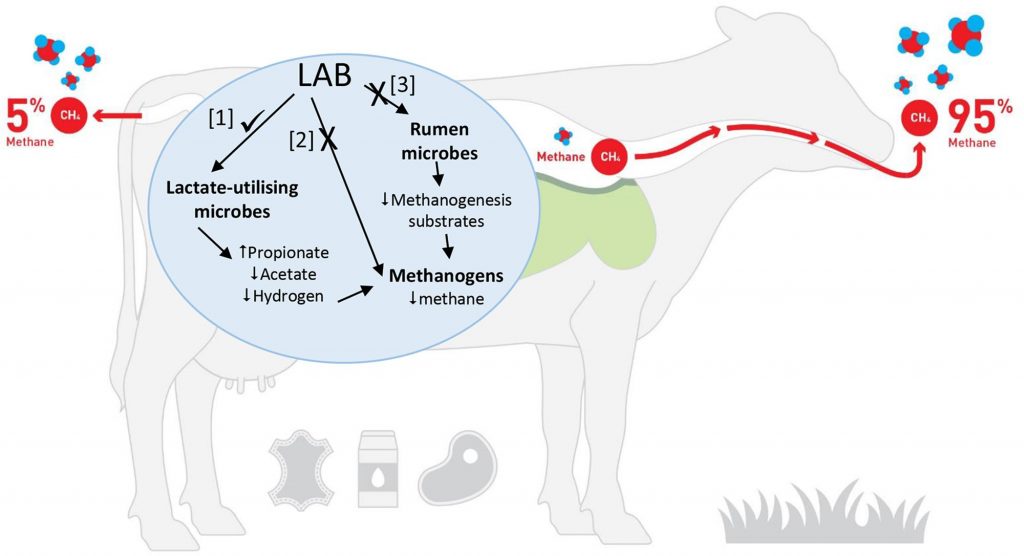
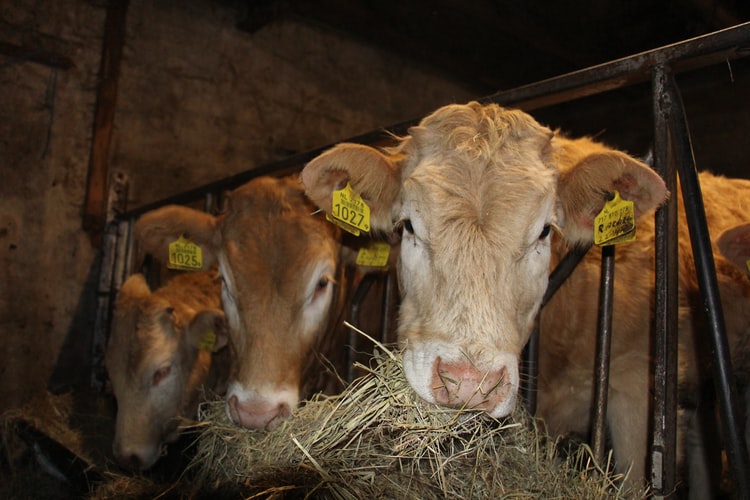
Feeding livestock a variety of seaweeds also known as green, brown, or red marine macroalgae has been proven to reduce methane (CH4) production, however these findings are highly variable results. For instance, an “in vitro” analysis suggested that tropical red seaweed (Asparagopis Taxiformis) can reduce methane (CH4) production by about 95% when supplemented to feed at a 5% inclusion rate. An “in vivo” study for dairy cows using A. Armata a close relative specimen, displayed that methane (CH4) production and yield decreased by 67 and 43%, in relation, at a 1% level of dry matter inclusion rate in the feed. Another report stated that the inclusion of Asparagopis Taxiformis at .10 and .20% of dry matter supplementation over 90 days decreased methane (CH4) production among steers of up to 40 and 98%, and produced improvements in weight gain of 24 and 17 kg respectively. Findings like these are quite remarkable and need to be duplicated by other researchers. Brown seaweeds (Ascophyllum Nodosum) are quantifiable, but are not as of a substantial impact on enteric methane (CH4) at higher dietary supplemental inclusion rates. The main component in methane (CH4) appears to correspond with the concentration of bromoform compounds, which seems to be the primary active ingredients although other compounds are yet to be recognized substances that contribute to methane reduction as well. The concentration of bromoform in Asparagopis Taxiformis was 6.55 mg/g in this study performed by Kinley et al. In comparison to 1.32 mg/g in the study conducted by Roque et al.


Today, widespread utilization of seaweed as a cattle feed additive would require massive, intensive farming to produce the necessary volumes for the feed industry, which could create several challenges. Environmental concerns in relation to ocean seaweed farming incorporate the potential risk of marine mammal entanglement, larval transport, and detached lines or rigs from storm damage. It will be a priority to identify and choose seaweeds which are native to the farming location, or that present hardly any risk of environmental impact. In the upcoming future, it can be possible to grow seaweeds in controlled conditions like indoor or nearshore, with the production of bioactive ingredients through bioengineering approaches.
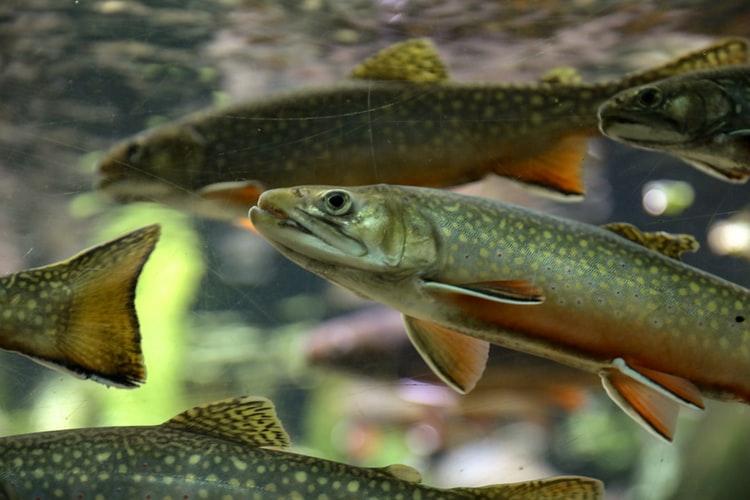
To supply large scale seaweed that would be required by the dairy and beef industries, methodologies that enable the sustainable and efficient production of seaweed of consistent quality required for development through aquaculture. The initial issue will be to pinpoint the ideal variety of plants derived from cultivation, or blends thereof, that harness qualities desired by consumers, such as: palatability, safety, potent methane production, etc… along with the ability to be produced in volume. Additionally, it is necessary to understand how season, location, breeding, processing, and other factors influence consistency and quality of the end product. Throughout many countries, a streamlined and consistent inter state policy plan for seaweed production is necessary to provide regulated assurance, promote investing, and industrial expansion. Ecologists, litigators, and regulatory agencies in association with seaweed farmers, also need to consider social acceptance to operate, specifically in nearshore areas where coastal landowners might perceive seaweed cultivation as an activity that could negatively impact property values.
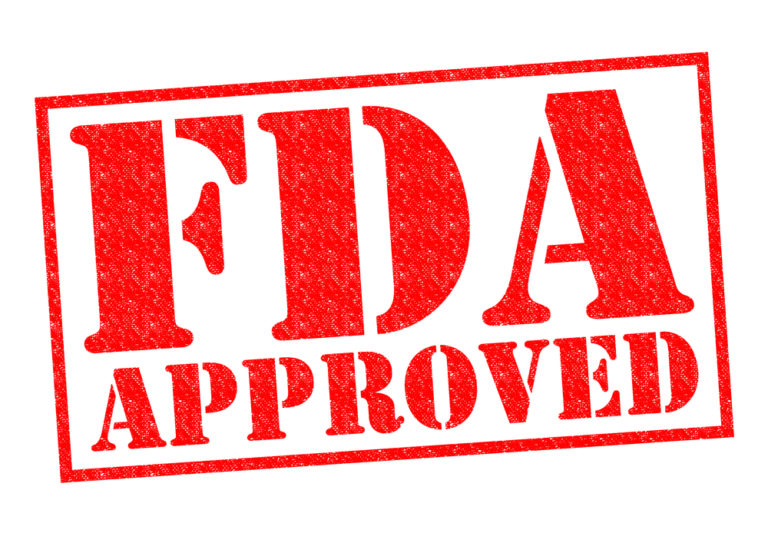
Being that seaweed has a high water content, seaweed is typically solar dried before shipping and long term storage. During processing it may impact the bioactive ingredients in seaweed, for the use in livestock feed, however the active compounds must be stable in liquid, high heat, and long term storage, along with the combination of vitamins. Life cycle assessment (LCA) and energy requirements need to be performed for the various aspects of seaweed production which includes cultivation, harvesting, drying, processing, and distribution.
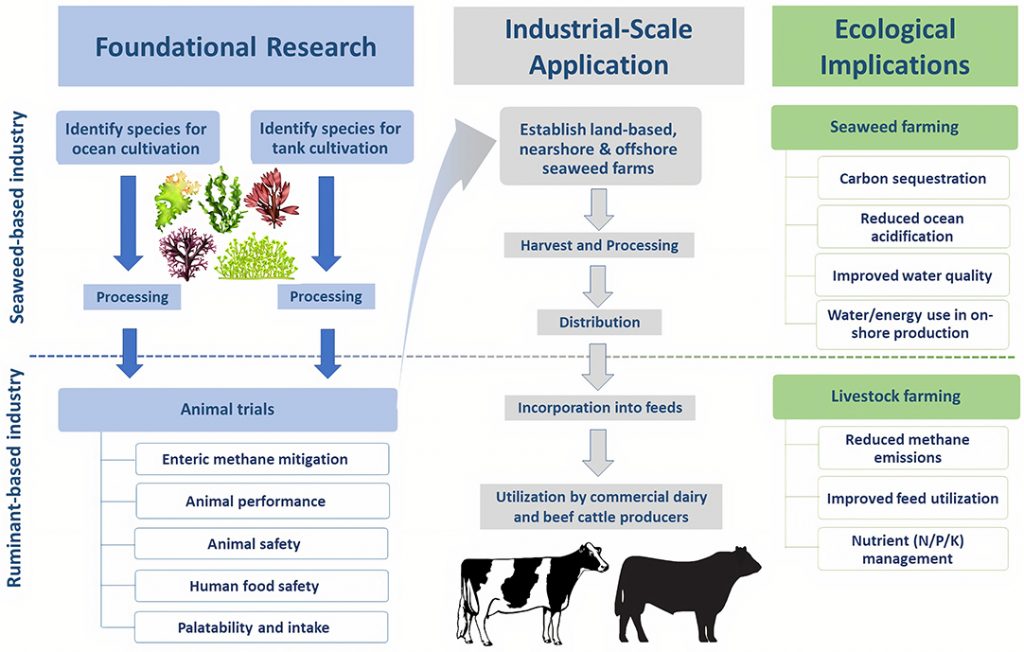
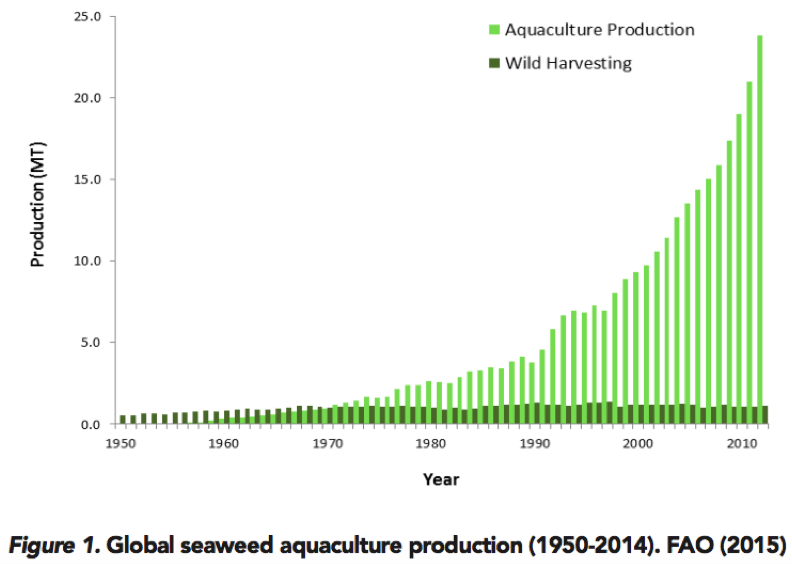
Additionally, in regards to enteric methane (CH4) emissions, seaweed producers have potential opportunities to capitalize on in regards to carbon trading markets or ecosystem services, as well as by products that can be utilized in biofuels, fertilizers, cosmetics, and other industries. On the flipside, seaweed can be produced as a component of a combined aquaculture production system along with other cultured species, such as finfish and shellfish, also some can be produced for human consumption. Although there are many major obstacles that need to be resolved for future seaweed farmers in order for them to realize any of the additional benefits of producing and mitigating methane (CH4) emissions regarding livestock.

This can be determined by 93 million cattle multipled by 9-10 Kg of dry matter intake (DMI) per animal multiplied by 365 days per year equates to 305-339 million metric tons (MMT) of dry matter intake (DMI) per year. Also 305-339 million metric tons per year multiplied by a 1% seaweed inclusion level equates to roughly 3-3.4 million metric tons (MMT) of dry seaweed per year.
93 million (M) cattle × 9–10 Kg of dry matter intake (DMI) per animal × 365 days per year = 305–339 million metric tons (MMT) of dry matter intake (DMI) per year
305–339 million metric tons (MMT) of dry matter per year × 0.01 seaweed inclusion level ≈ 3–3.4 million metric tons (MMT) of dry seaweed per year
Additional quality control challenges related to the activity and consistency of seaweed raw materials, it will be necessary for producers to determine the best strategies for drying or otherwise minimizing the vast amounts of water within fresh seaweed, respectively the wet weight would bring forth a major issue to the transportation of seaweed from production to processing. It will be necessary for feed manufacturers to consider any special protective packaging method that may be necessary for delivery and to improve shelf life, along with the by-products created and how to repurpose waste materials.
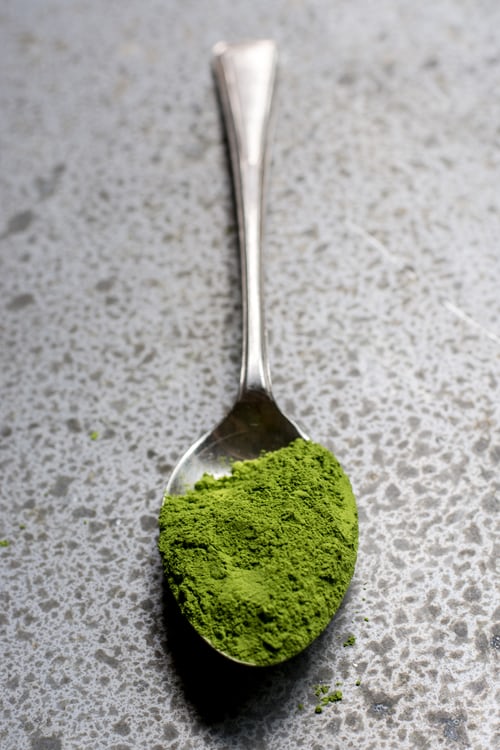
Utilization of seaweed for the purpose of enteric methane (CH4) mitigation in a commercial setting is still immensely untested. Numerous “in vivo” studies have researched the effects of a seaweed specified as Asparagopsis sp., on methane (CH4) emissions and livestock productivity. However, it is not clear whether the observed effects can be replicated in the long term and across various production systems. In addition, the raw seaweed materials utilized in these studies were harvested from the wilderness and the level of active compounds was not consistent. At the present moment, there is not a Asparagopsis sp. supply chain available for cattle feed and the feasibility and overhead costs required for scaling production of this species have yet to be determined.
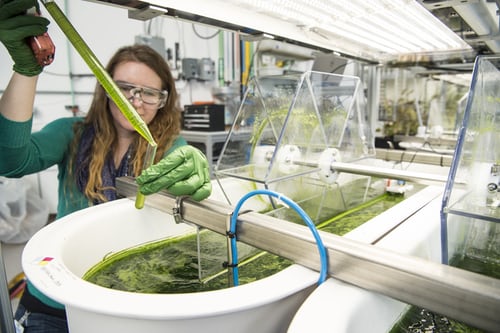
Both short and long term trials are necessary for comprehensively evaluating the utilization of seaweed in livestock production. Short term studies should pinpoint which seaweed species possess the greatest potential for methane (CH4) reduction. Also these studies should examine the impacts on animal productivity such as beef and milk reduction, animal health, feed intake, product quality, active compounds in edible food products along with potential changes in manure consistency. Furthermore, as both simple and complex carbohydrates in seaweed vary substantially from land based feed products, research on bioavailability and digestibility of these carbohydrates for livestock production is needed. Longer term trials are necessary to further examine the effects of various seaweeds on mitigating methane (CH4) emissions, health, productivity, digestibility, active compound concentrations, and excretion of manure emissions. Feeding approaches in regards to seaweed products will require the accommodation of different production systems, as these effects may be impacted by diet, climate, geography, breed, and other variables. Development of commercial seaweed products require mitigation of any environmental or safety hazards, combined with the presence of halogenated substances.
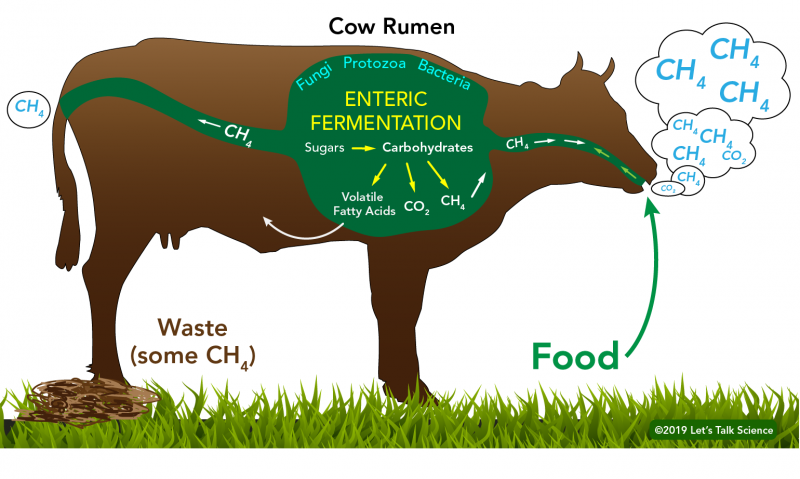
When considering livestock production, it is essential to evaluate economic benefits of any seaweed products in the near future. Even if legislation regulates the utilization of seaweed or other methane (CH4) mitigating products, farmers could face a financial burden that could increase if livestock performance is not improved thereafter such as improved productivity, health, efficiency, or product quality.

To maneuver through the logistical issues of feeding seaweed based products, there is also research stating that when livestock is fed two tropical legume species such as “Desmanthus and Leucaena”. Both plant species help in reducing methane (CH4) emissions but boost animal growth as well. Bioactive compounds found in these plants reinforce the microbes in the rumen similarly to Asparagopsis. However, the effect is lower, at approximately 20% reduction in methane (CH4) emissions.

Another approach is whether the microbiome which is the gut bacteria can be influenced in young cattle. The idea is that this method will also reduce methane (CH4) emissions. However, this study is relatively new, but the concept is to provide livestock with compounds early on in their development to restructure the rumen microbiome to in turn produce lower methane (CH4) emissions. The notion is that, once the microbiome is modified, the transition to low methane digestion will remain, hopefully for the duration of the remaining years of the livestock. These findings are all based out of Lansdown Research station, which is south of Townsville.
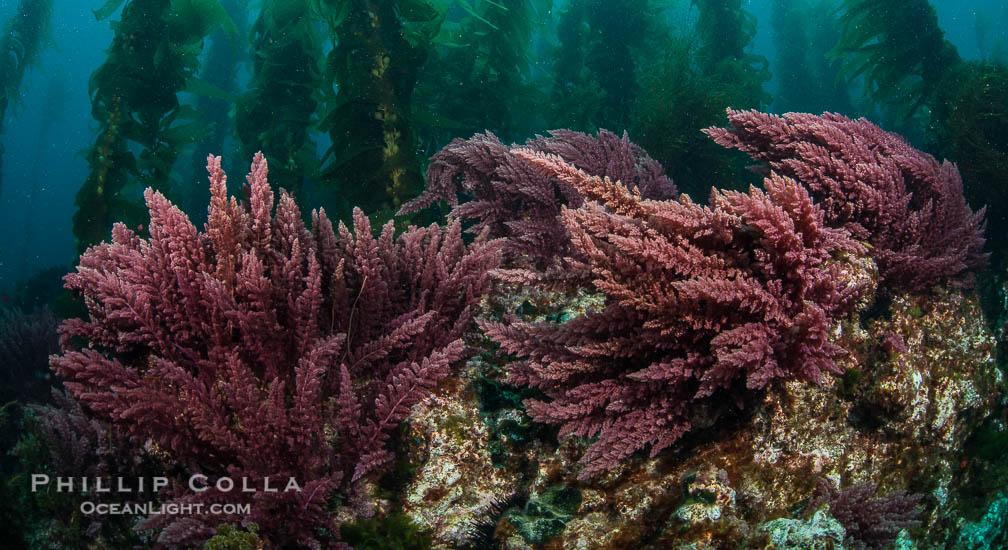
The study, found that when cattle are fed a low forage feed mixture combined with molasses and pulverized-seaweed, the ruminants produce 80% less methane during their projected growth cycle. We can now eat cheese and milk and beef knowing that the cow producing it lived a much healthier life and helped lower the overall carbon impact of livestock agriculture!
Asparagopsis taxiformis and Emrias Kebreab are two unusual names that have come up in the climate change discussion. Ermias, Associate Dean at UC Davis and other biology scientists have released a study of CH4 (methane) emissions from Hereford cows using feed supplemented with asparagopsis taxiformis also known as red algae which is found in many types of seaweed in U.S. coastal waters and around the world.
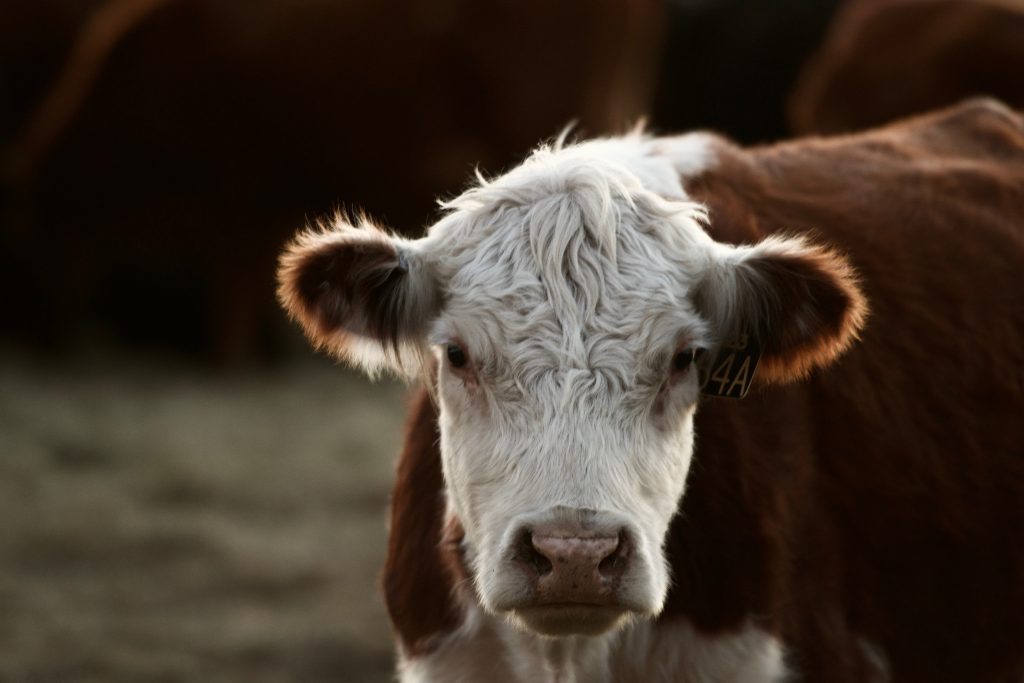
Red seaweed (Asparagopsis taxiformis) reduces enteric methane by over 80 percent in beef steers
View ORCID ProfileB.M. Roque, M. Venegas, R. Kinley, R. deNys, T. L. Neoh, T.L. Duarte, View ORCID ProfileX. Yang, J. K. Salwen, View ORCID ProfileE. Kebreab
Pleasure to present to faculty & students of @Caltech Dep. of Environ Sci and Engineering on carbon neutrality and the livestock industry. Thanks to @chr_fronge
— Ermias Kebreab (@ErmiasKebreab) January 14, 2021
for nomination and introduction. Enjoyed the discussion. Wish it was in person though!

